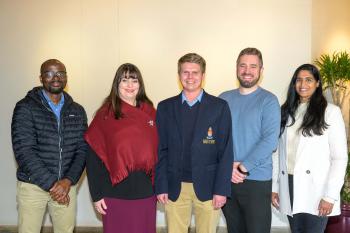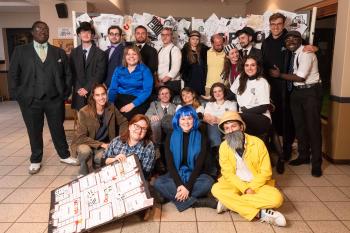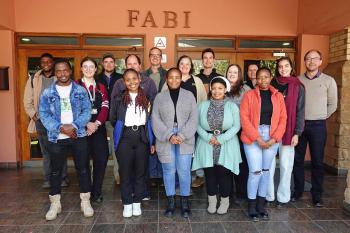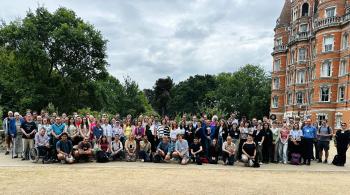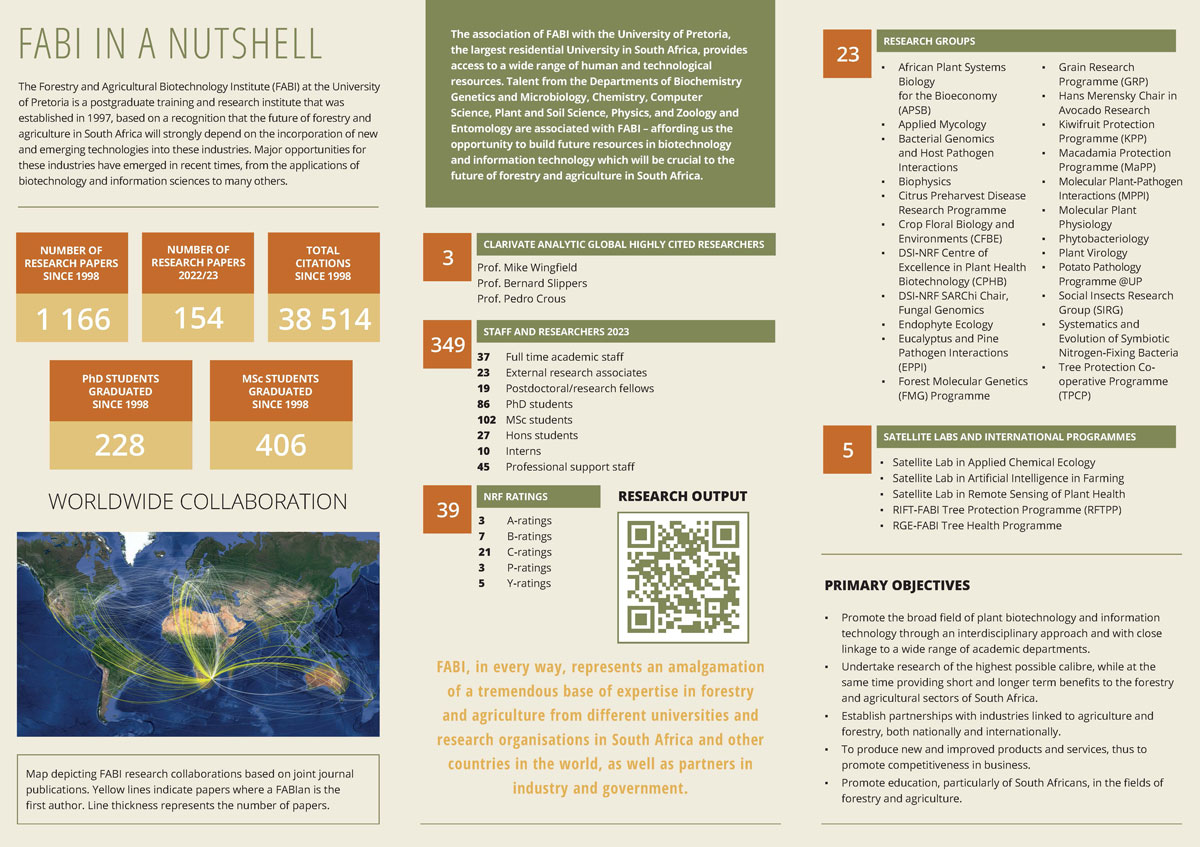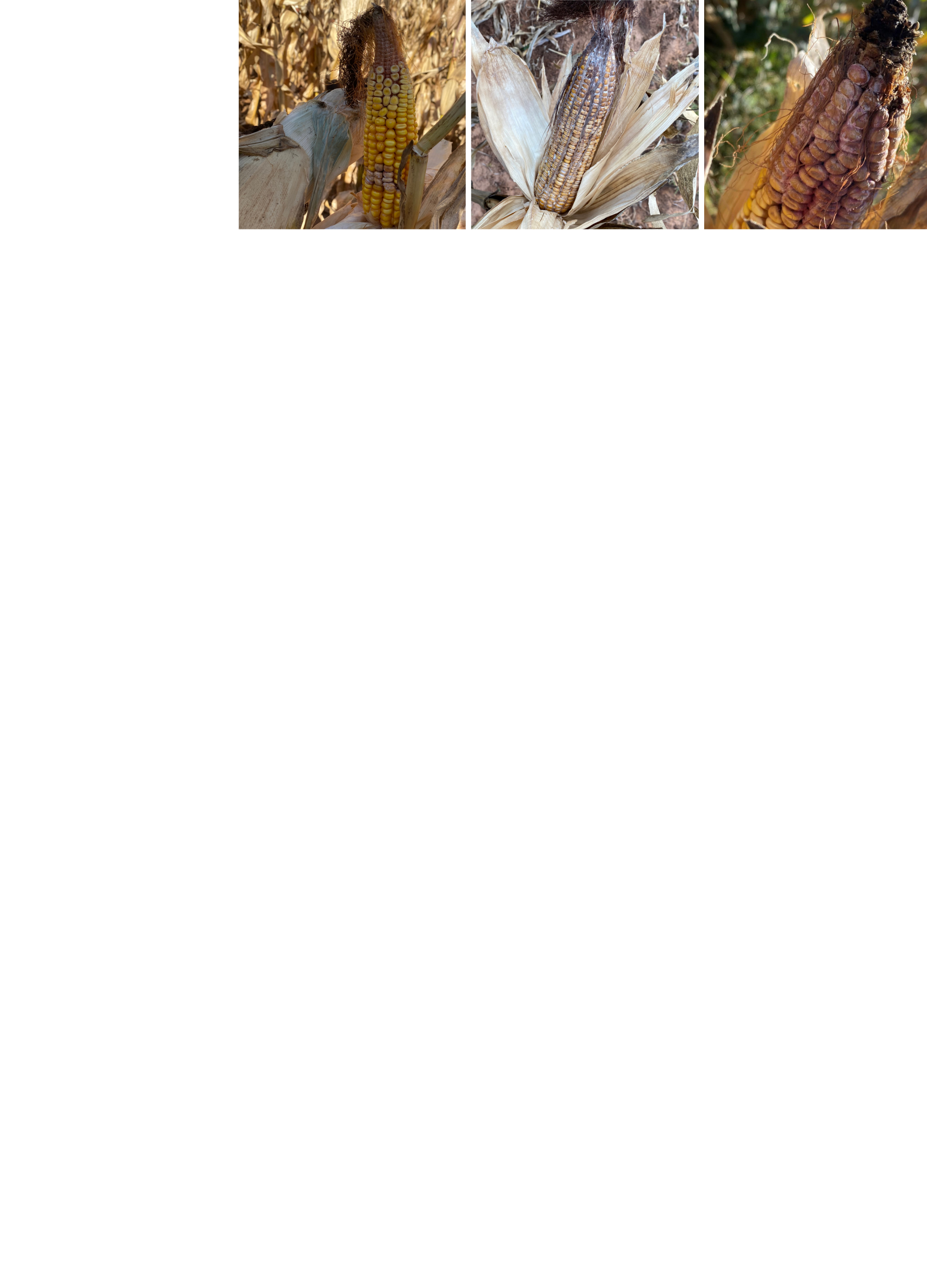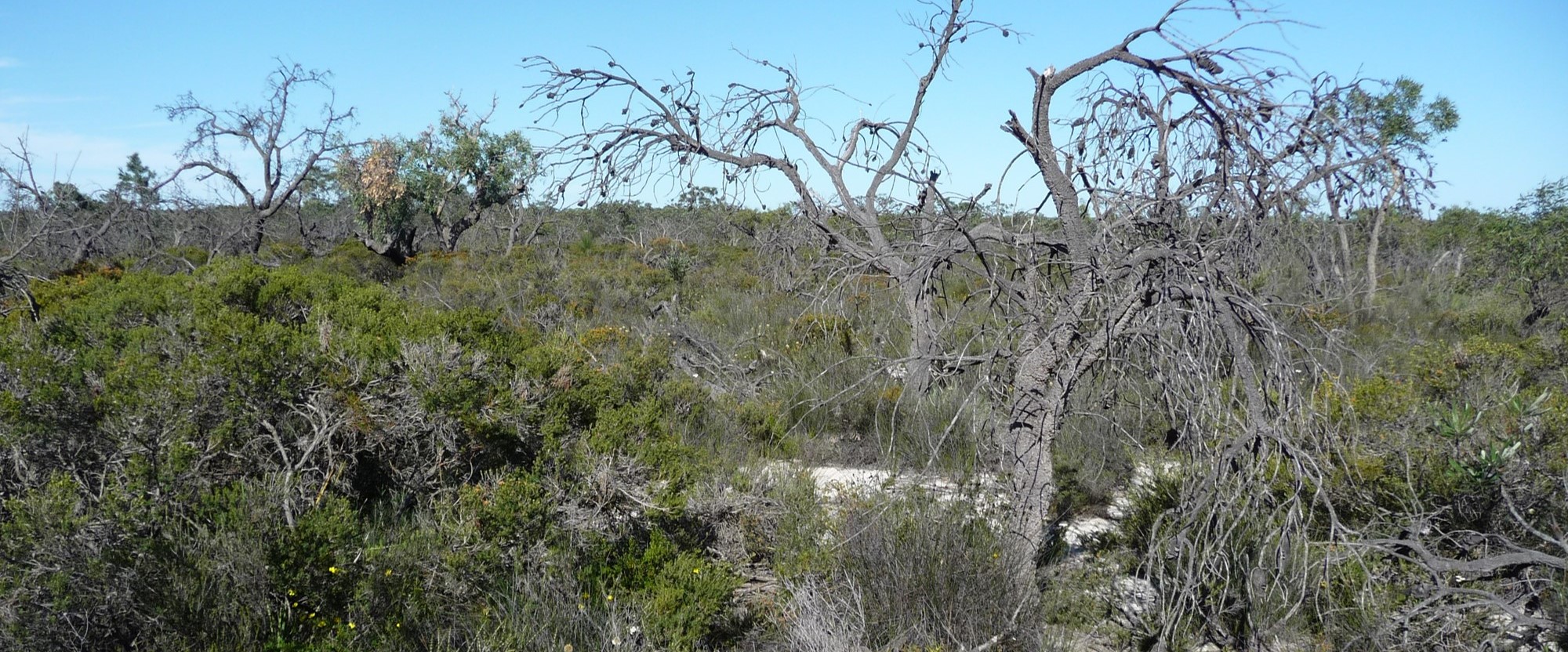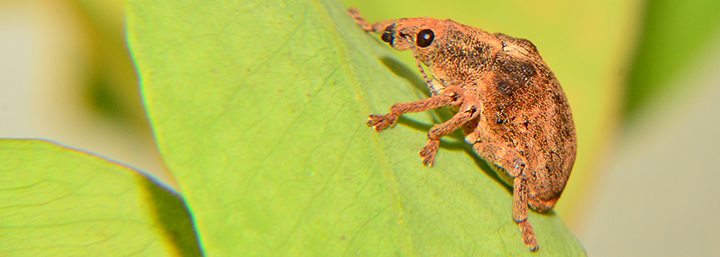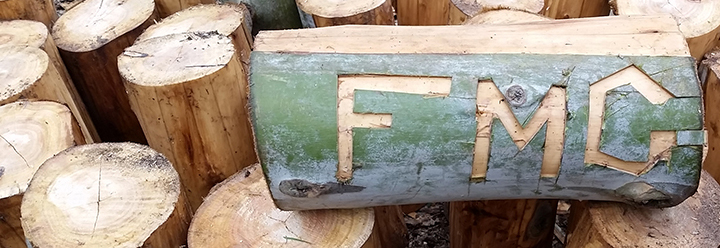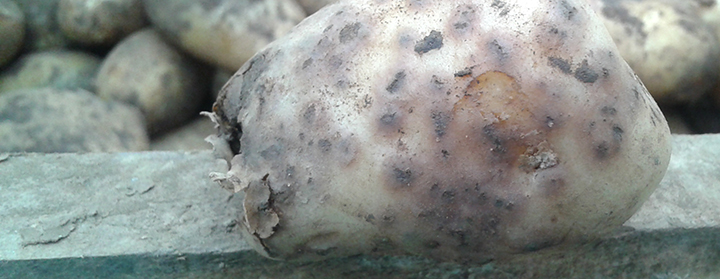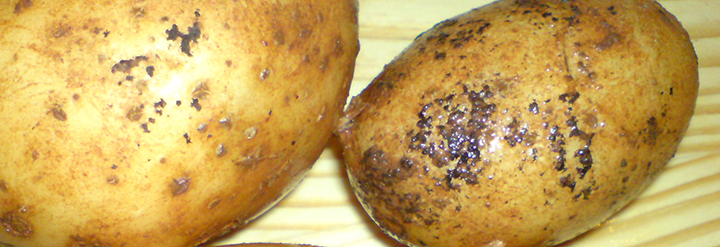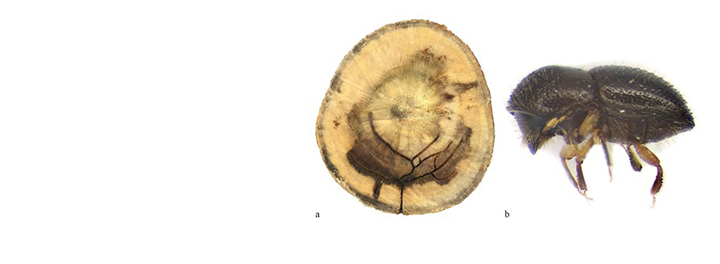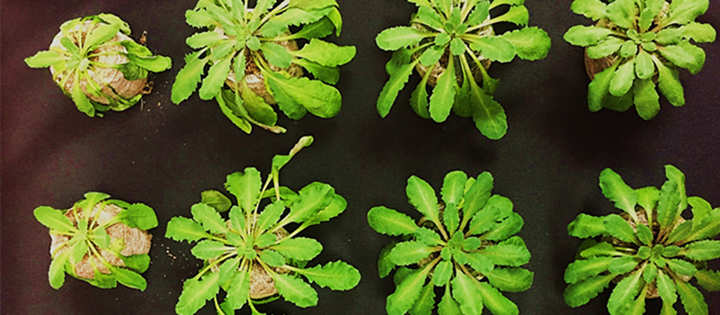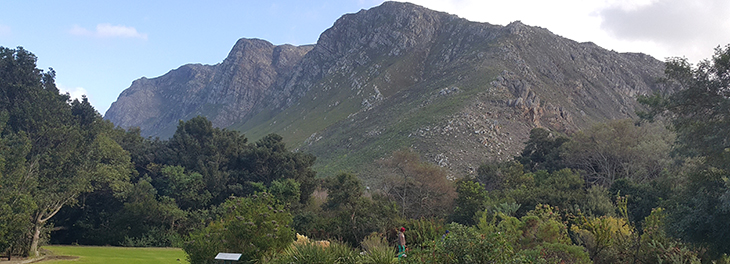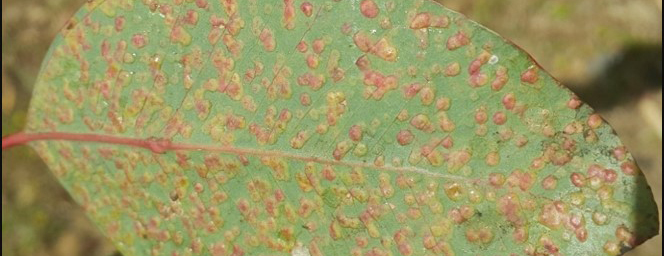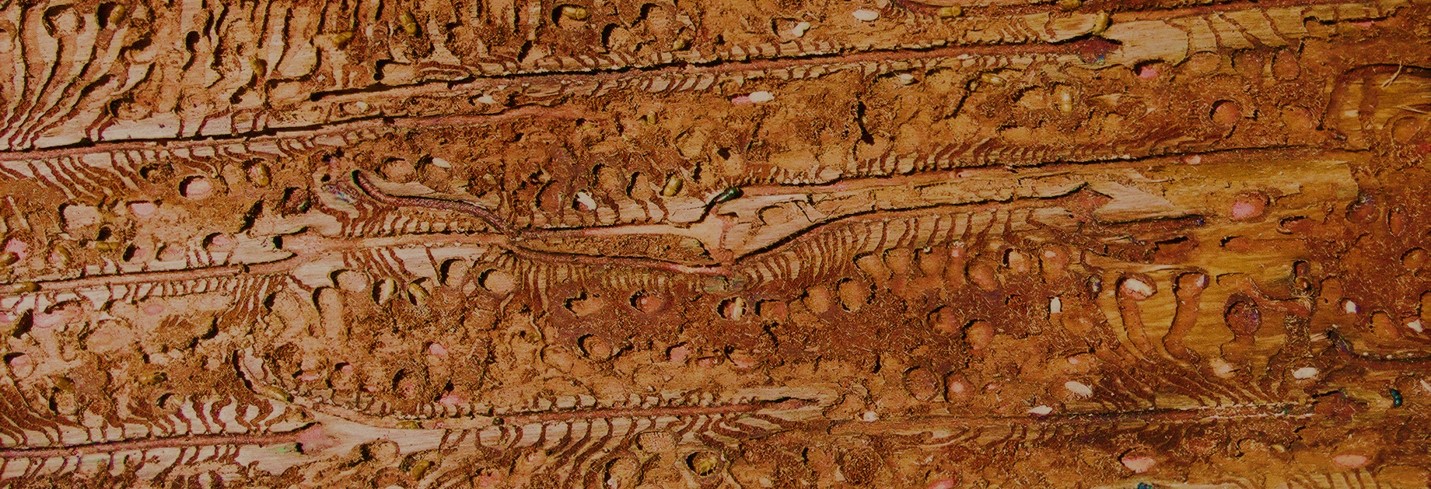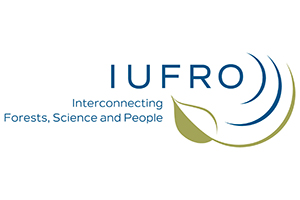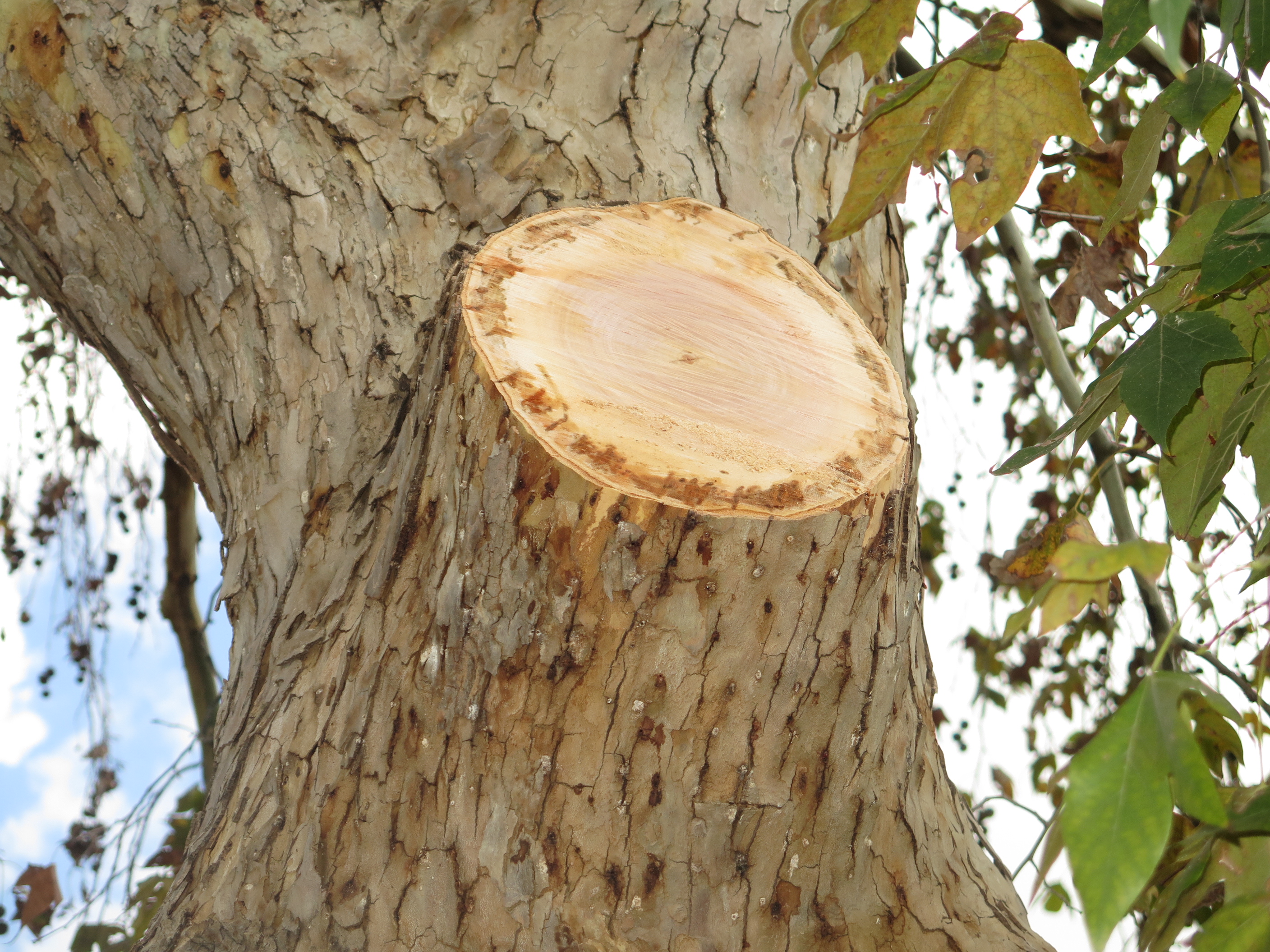
'Polyphagous' refers to the ability of the PSHB to infest many different tree species. In California, surveys in botanical gardens revealed that more than 200 tree species have been infested, damaged and often killed, by these organisms. An important distinction is being made between different types of infestations. Reproductive host trees are trees that the beetle infests and where it successfully establishes a breeding gallery in which the fungus grows, where eggs are laid, and larvae develop into mature adults, thus completing its life cycle. The majority of reproductive hosts eventually succumb to the disease symptoms caused by the fungus. Non-reproductive host trees are attacked by the beetle, but the beetles do not establish breeding galleries. The fungus may, or may not cause disease and these trees are generally not expected to die.
A problem when compiling host tree lists is that sometimes PSHB can infest a stressed tree (e.g. as result of drought, too much water, root damage, etc.). Such an individual, stressed tree might then become a reproductive host, whereas healthy growing individuals of the same species are barely affected. Thus, when trees are assessed for Fusarium Disease or whether it is a reproductive host, other stress factors on the tree should always be considered.
To date 161 tree species have been found infested in South Africa. These include 83 reproductive hosts and 78 non-reproductive hosts. The COMPLETE HOST TREE LIST can be downloaded here (Last updated 2023-04-18).
- What is the Polyphagous Shot Hole Borer (PSHB)?
- What is the difference between the Polyphagous Shot Hole Borer (PSHB) and Invasive Shot Hole Borers (ISHB)?
- I think my trees are infested with PSHB, how can I know for sure?
- What does the PSHB look like?
- I found a beetle larger than 2 mm in my trees. What is it?
- I am still not sure if I have found PSHB, who can help me with identification?
- Should I send a sample of PSHB or the infested tree to FABI?
- What is the difference between reproductive and non-reproductive host trees?
- What is a ‘heavily infested’ reproductive host tree?
- What species of trees are attacked by PSHB?
- In which parts of South Africa has the presence of PSHB been confirmed?
- How does the PSHB kill trees?
- I have confirmed PSHB is attacking trees on my property. What should I do now?
- Do I really need to cut my tree down?
- I have confirmed PSHB is infesting trees on government land. What should I do now?
- Are there any chemicals that I can use to treat my trees?
What is the Polyphagous Shot Hole Borer (PSHB)?
What is the difference between the Polyphagous Shot Hole Borer (PSHB) and Invasive Shot Hole Borers (ISHB)?
The Polyphagous Shot Hole Borer [PSHB = Euwallacea fornicatus] is one of four closely related species. The
other three species are:
- Tea Shot Hole Borer A [TSHB-a = Euwallacea perbrevis]
- Tea Shot Hole Borer B [TSHB-b = Euwallacea fornicatior]
- Kuroshio Shot Hole Borer [KSHB = Euwallacea kuroshio]
To date, only the PSHB has been found in South Africa. However, both the PSHB and KSHB have invaded
California, while TSHB-A has invaded Florida. These species carry similar fungi, have similar life styles and
similar effects on trees. From a management perspective, they are dealt with in the same ways. In California
they have thus started referring to the PSHB and KSHB jointly with the single term Invasive Shot Hole Borers
(ISHB).
I think my trees are infested with PSHB, how can I know for sure?
The entrance holes of PSHB are about 1mm in diameter. This is approximately the size of the tip of a ballpoint pen or toothpick. The holes are perfectly round (never oval).
You can compare the symptoms on your trees with the following photographs:
- General symptoms of PSHB attack and the disease its fungus causes in trees
- Variety of PSHB attack symptoms on different tree species
What does the PSHB look like?
If you found beetles on your tree(s), compare them with these photographs:
- PSHB life stages
- Note: the PSHB beetle is only 2mm long
I found a beetle larger than 2mm in my trees. What is it?
Many other larger beetle species bore into dead and dying trees, but these are usually secondary, and not the cause of tree death. The PSHB is one of only a few insects that will bore holes into living stems or branches of trees.
I am still not sure if I have found PSHB, who can help me with identification?
You can send photographs of the infested trees to the FABI diagnostic team, but to assist you we need a specific set of photographs and some basic information.
- Please follow these instructions when taking photographs
- Please provide the tree species (if known) and location (name of the town, if possible the exact address).
- Send the photos by email to: This email address is being protected from spambots. You need JavaScript enabled to view it. (English please, some of our staff do not speak the other South African languages
Should I send a sample of PSHB or the infested tree to FABI?
PLEASE DO NOT SEND, POST OR COURIER LIVING BEETLES TO US WITHOUT DISCUSSING IT WITH US FIRST, AS THEY CAN EAT THROUGH PAPER AND PLASTIC. WE DO NOT WANT TO SPREAD THE BEETLE AROUND THE COUNTRY!
We shall request you to provide a sample for confirmation only when the tree species in question is not on the current host tree list, or is in an area where the beetle has not been found before (current distribution in South Africa).
- Instructions on how to prepare a sample.
- Please fill out this sample information sheet with as much information as is available, print and include with the sample, and email it to This email address is being protected from spambots. You need JavaScript enabled to view it.
What is the difference between reproductive and non-reproductive host trees?
The PSHB can attack many species of trees. However, it is not able to breed and multiply on all these tree species.
- Reproductive hosts: trees in which both the beetle and the fungus establish. The beetles construct galleries (tunnels) and breed successfully. In many cases reproductive hosts will eventually die.
- Non-reproductive hosts: trees that are attacked by the beetle, but in which the beetles do not establish breeding galleries. The fungus may, or may not cause disease. Trees are generally not expected to die.
What is a ‘heavily infested’ reproductive host tree?
A tree is considered to be a heavily infested reproductive host if PSHB is actively breeding throughout the tree. You will see many entrance and exit holes, with other signs such as frass or noodles indicating extensive beetle activity. Once a susceptible reproductive host tree becomes heavily infested, it is generally not expected to survive.
What species of trees are attacked by PSHB?
An updated list of confirmed host trees in South Africa. Tree species are only added to this list if the identity of the beetle and/or the fungus was confirmed in our laboratories by means of DNA sequencing.
In which parts of South Africa has the presence of PSHB been confirmed?
Map of confirmed locations in South Africa. Localities are only added to this list if the identity of the beetle and/or the fungus was confirmed in our laboratories by means of DNA sequencing.
EASTERN CAPE: Kaukamma (Storms River; Tsitsikamma Falls); Makana (Makhanda - Grahamstown); Ndlambe (Port Alfred); Buffalo City (East London)
FREE STATE: Mangaung (Bloemfontein)
GAUTENG: Ekurhuleni (Bedfordview); City of Johannesburg (Region A: Lanseria, Midrand; Region B: Craighall Park, Hurlingham, Randburg; Region C: Roodepoort; Region D: Soweto); Tshwane (Daspoort, Rietondale Park)
KWAZULU-NATAL: eThekwini (Buffelsdraai, Durban, Durban North, Gillets, Kloof, Scottburgh, Umhlanga); KwaDukuza (New Guelderland, Shaka's Rock); Msunduzi (Pietermaritzburg); Umdoni (Pennington); uMhlathuze (Felixton); Ray Nkonyeni (Umzumbi)
LIMPOPO: No confirmed reports to date.
MPUMALANGA: Mbombela (Nelspruit)
NORTHERN CAPE: Frances Baard (Jan Kempdorp)
NORTHWEST: Dr Ruth Segomotsi Mompati (Greater Taung); Matlosana (Hartbeesfontein)
WESTERN CAPE: Bitou (Greater Plettenberg Bay, Harkerville Forest); George (George, Wilderness); Knysna (Knysna, Sedgefield); City of Cape Town (Somerset West)
How does the PSHB kill trees?
As adult females bore into trees to establish breeding galleries, they introduce the fungus Fusarium euwallaceae, which colonises gallery walls. The fungus is cultivated as a food source for developing larvae and adult beetles, but it invades and kills the tree’s vascular tissues, preventing sap flow. This can lead to branch dieback and tree death.
I have confirmed PSHB is attacking trees on my property. What should I do now?
Treatment or removal of infested trees on private land is the responsibility of the landowner. Firstly, try to determine whether or not your tree is a reproductive host and how severely it is infested. This will determine which action should be taken.
If the tree is a heavily-infested reproductive host (list of reproductive hosts), cut it down. If you are unsure, your local arborist might also be able to advise.
- If the main stem is not infested, only the infested branches need to be removed. (But this is unlikely, as PSHB usually infests the stem first).
- Preferably treat the cut wood on site in one of the following ways:
- Chip the wood (if possible to finer than 5cm), and allow chips to compost by keeping the heap wet.
- OR burn the wood on site if fire is permitted in the area where you live. Some beetles will fly away when the wood becomes hot or when smoke appears, so do not burn wood in uninfested areas.
- OR solarize (leave in full sun) chopped wood under thoroughly-sealed clear plastic sheets for at least one month in summer or several months during winter.
- If the wood has to be removed from the property, dump the wood at a dedicated dumping site (contact your municipality to find out where such a site is).
- DO NOT MOVE FIREWOOD AROUND, ESPECIALLY NOT OUT OF THE INFESTED AREA WHERE YOU LIVE.
If the tree has only a few beetle holes, and no signs of further activity after the initial attacks are seen, it is most likely a non-reproductive host (list of reproductive hosts).
Do I really need to cut my tree down?
The removal of heavily infested reproductive host trees is considered an important strategy to reduce the number of beetles in the environment. Heavily infested reproductive hosts become a major source of large numbers of beetles, which increases the risk of adjacent trees being infested, and the likelihood of PSHB spreading to new localities. Removing these heavily infested trees reduces the risk of unchecked beetle spread. Importantly, after the removal of an infested tree, the material has to be disposed of appropriately to reduce beetle survival and spread.
I have confirmed PSHB is infesting trees on government land. What should I do now?
Inform the relevant authority. Trees on municipal land (e.g. streets and city parks) are the responsibility of the municipality, and may not be removed without their permission. Trees on other government property (e.g. nature reserves) are managed by a variety of provincial and national government bodies (e.g. SANParks, CapeNature, Ezemvelo KZN Wildlife). Some of these authorities have put reporting structures in place. The ones of which we are aware, are listed here:
Western Cape: fill in the online report form at www.capetowninvasives.co.za
Johannesburg: email This email address is being protected from spambots. You need JavaScript enabled to view it. or Whatsapp: 0828030748
Other municipalities: contact the Parks, Garden or Environment section of the relevant municipality.
For parks or protected areas: report to the appropriate government structure.
Are there any chemicals that I can use to treat my trees?
At present no chemical product is registered (legal) to use on PSHB in South Africa. However, control of light infestations on trees may be achievable by direct injection of insecticides and fungicides. Studies from California show combinations of the insecticides emamectin benzoate and bifenthrin and fungicides, including propiconazole, can reduce infestation, especially when applied during early stages (Mayorquin et al. 2018; Grosman et al. 2019). Chemical control of PSHB in more heavily infested trees, however, seems unattainable (Mayorquin et al. 2018). Chemical treatments are currently being investigated in a South African context. While some of these may prove effective, applying these in natural settings will not be feasible.
FABI’s mandate is to conduct research on tree health, paid for by specific industries and organizations, as well as to provide scientifically sound information about PSHB to all stakeholders. We do not have the capacity to treat or remove infested trees. If the trees you are concerned about are on municipal (e.g. streets, parks, etc.) or government land (e.g. in a national park or protected area), the trees should be reported to the municipality or responsible agency. If the suspected infested tree is on private property, the responsibility for removal and treatment is with the landowner. Please contact your local arborist for advice on possible treatment or assistance with tree removal.
If you have questions to which the answers are not provided on our Frequently Asked Questions list, please feel free to contact us at This email address is being protected from spambots. You need JavaScript enabled to view it.
If you suspect that you have found the PSHB on a tree species not yet mentioned on the current host tree list, or from an area where the beetle has not been found before (current distribution in South Africa), please inform us at This email address is being protected from spambots. You need JavaScript enabled to view it.
PLEASE DO NOT SEND SAMPLES TO FABI WITHOUT FIRST CONTACTING US FIRST AT This email address is being protected from spambots. You need JavaScript enabled to view it., AS THESE BEETLES CAN EAT THROUGH PAPER AND PLASTIC. WE DO NOT WANT TO SPREAD THE BEETLE AROUND THE COUNTRY!
To report infested trees in public spaces please contact the local authority. Some municipalities have established dedicated report vehicles:
Western Cape: fill in the online report form at www.capetowninvasives.co.za
Johannesburg: email This email address is being protected from spambots. You need JavaScript enabled to view it. or Whatsapp: 0828030748
Over the past few years, researchers at FABI had been in contact with senior academics from seven universities in relation to PSHB research. From these engagements a multi-institutional and multi-disciplinary research network evolved. At present we are aware of 16 research projects on PSHB conducted by Honours, Masters and PhD students, research fellows and postdoctoral Fellows, that are overseen by altogether 17 supervisors from the different universities.
The PSHB Research Network was established at a meeting of these researchers in May 2019 at FABI. The aims and strategies of the PSHB Research Network are as follows:
- To align and coordinate all research efforts by bona fide researchers from academic institutions in South Africa. This is to make sure that expertise and resources are utilized to the maximum in order to answer the most important research questions related to PSHB and its fungal symbionts.
- To provide science- and data-based advice to all stakeholders in government and private sectors.
- To effectively communicate new research findings related to PHSB among network members and to stakeholders and the public.
- To leverage funding. By showing that research projects form part of a well-structured, coherent research programme, more funding opportunities should become available.
New Publications
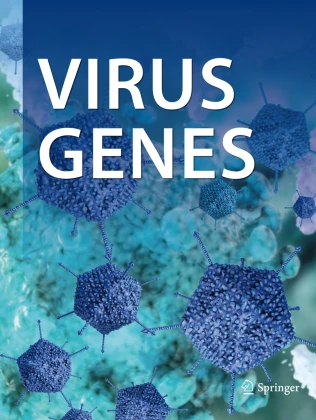 Hough B, Wingfield B, Read DA. (2024) Identification and characterization of mycoviruses in transcriptomes from the fungal family Ceratocystidaceae. Virus Genes
10.1007/s11262-024-02112-4
Hough B, Wingfield B, Read DA. (2024) Identification and characterization of mycoviruses in transcriptomes from the fungal family Ceratocystidaceae. Virus Genes
10.1007/s11262-024-02112-4  Read DA, Pietersen G, Slippers B, Steenkamp E. (2024) Genomic characterization of novel viruses associated with Olea europaea L. in South Africa. Archives of Virology 169
10.1007/s00705-024-06132-1
Read DA, Pietersen G, Slippers B, Steenkamp E. (2024) Genomic characterization of novel viruses associated with Olea europaea L. in South Africa. Archives of Virology 169
10.1007/s00705-024-06132-1 

